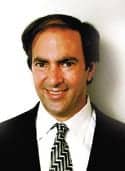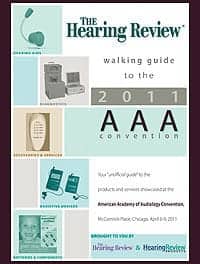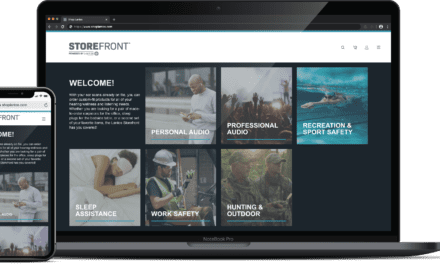Sy Kessler Sales Inc introduces a new, Swiss-manufactured, long-lasting battery to the US hearing aid market
Probably the key component of a hearing instrument is the most utilitarian: the battery. But without it, the high-tech device is nothing more than circuit boards and wires in plastic housing. However, the battery is perhaps the least durable of the components, having a lifespan of only a few days. This is the reality of almost any power supply—it is finite.

There are ways to maximize the finite life of the battery, and Sy Kessler Sales Inc, Dallas, is introducing a battery to the US market that promises reliability and long life. The 38-year-old company is partnering with Swiss manufacturer Renata to distribute the European company’s Maratone battery® to hearing aid dispensers across the United States.
What’s in a Name?
Sy Kessler Sales’ president, Henry Kessler, likens the battery market to a race, and says that “like a marathon race, Renata has the lead.” Indeed, the battery’s name—which was derived from the ancient Greek foot race—reflects the competitive nature of the hearing aid battery market, which is filled with numerous competitors from across the world.
Sy Kessler Sales was founded in 1968 by Sy Kessler, Henry’s father, who had been a sales rep for a division of the watch and clock company Bulova, which sold equipment to watchmakers. With his own business, the elder Kessler originally sold reconditioned repair equipment and supplies to watchmakers throughout the Southwest. He eventually added watch batteries to the business in the 1970s, almost as soon as the watch battery replacement market began.
The company’s primary product lines continue to be watch batteries and batteries for other consumer products. Sy Kessler’s customers range from watch manufacturers to fine jewelers to health care companies to businesses in the computer and communication industries. Aside from batteries, Sy Kessler also sells about half of the ultrasonic cleaning systems, diamond testers, and microscopes sold into the North American watch and jewelry industry.
Henry Kessler began the company’s relationship with Renata shortly after his father’s death in 1980. Those Renata batteries were much different than the ones Sy Kessler Sales distributes today. “Renata was producing mercury hearing aid batteries in the early ’80s back when we first started working together,” Kessler says. “Mercury was the primary power source for early hearing aids. Zinc-air production began around 1992.”
The Renata Maratone is the result of more than 12 years of continuing research to increase the lifespan of a zinc-air battery. This was done, says Andreas van Baerle, Renata’s international product manager for hearing aid batteries, by optimizing the use of space inside the battery and refining the chemical mixture. The result is a battery that not only gives hearing device users one or more days of use, but also keeps its power above 1.1 volts—the typical low battery zone that causes many hearing aids to automatically shut down, rendering the instrument useless.
The development process included all recognized standard tests, as well as separate laboratory tests performed by Renata and an independent laboratory in Denmark. According to Sy Kessler Sales, the tests showed that, in comparison to other batteries on the market, Renata had developed a longer lasting battery.
Renata’s laboratory tests also included recreating use in the roughest sound environments in as realistic a way possible. To do this, high power pulses were applied every second, draining the batteries much more rapidly than other such tests recognized as the norm by organizations such as ANSI and IEC for standardized testing throughout the market.

The independent laboratory compared Maratone batteries in two popular hearing aids, together with fresh batteries from competitors. The multiple battery tests included scenarios involving normal levels of temperature and humidity in a variety of sound environments. According to Renata documents, the results showed that Maratone batteries outperformed their competition. But more important, according to van Baerle, outside the laboratory, the battery has delivered the same performance.
Maratone batteries come in a variety of sizes, making it available for the majority of hearing devices on the market.
One of the primary benefits of the battery, van Baerle says, proudly invoking the Swiss tradition of high quality, is its reliability. “Every battery that is produced is the same in quality—there are no variables from battery to battery,” he says. Renata has an ISO 9001 rating.
Exclusive Marketing
The single-minded focus of Renata and Sy Kessler Sales on Maratone batteries as an exclusive product for the hearing device market is reflected in the way the device is marketed.
Unlike some other hearing aid batteries that can be purchased in consumer venues, such as supermarkets, Maratone batteries are marketed exclusively to hearing aid dispensers. “You will not see the Renata Maratone outside the hearing dispenser [office],” van Baerle says. “And we provide marketing materials only to professionals.”
Though this gives Maratone batteries exclusivity, providing dispensers with the confidence that they can stock the batteries and not be underpriced by a major chain, the difficulty with this approach lies in the fact that the Renata brand has less consumer awareness in the market.
Though it has been in existence for about 50 years and is well known in the watch and electronics industries, Renata is not as well recognized in the hearing aid battery market. “Renata has kept a fairly low profile [in the hearing aid market] until now,” van Baerle says. To build brand confidence, the company includes its Swatch affiliation and the Swiss cross—the symbol of Swiss quality—on all of its packaging.
While Maratone batteries are “competitively” priced, they are not the lowest cost battery available. But this is not something that will inherently limit the market for the battery. “Many people are willing to pay more for better performance,” Kessler says, adding that, in this case, the payoff for the dispenser is crucial: a lower hearing aid return rate. In some cases, a hearing instrument will be returned not because it does not work properly, but because the battery is unreliable, Kessler says.
To motivate dispensers to give the Renata Maratone a try, Kessler says that the data from the tests performed by Renata and the independent laboratory are shared with the dispensers.
Building a Relationship
The battery is marketed to dispensers in a number of ways, including advertising, trade shows, and working with other hearing instrument suppliers and manufacturers. The Internet is another way that Sy Kessler Sales and its partners get their hearing aid batteries to dispensers. “Renata batteries are available on the Internet, on multiple sites,” Kessler says. “Some of our strongest distribution partners are hearing health care Web-focused. The Internet represents tremendous potential for us, because we know that when given a chance, customers will try our products, and if they like our performance, they can be very loyal.”
But, Kessler says, the most effective marketing is plain old-fashioned relationship building.
While the data, for the most part, speaks for itself, Kessler acknowledges that numbers are not enough. The way Sy Kessler’s sales and support staff treat the dispensers is another key motivating factor for carrying batteries such as the Renata Maratone. Kessler likens the relationship to a familial one. “After dispensers start to work with us, they come to depend on us, and the relationships become like a family. Many times when a dispenser calls us, we’ll recognize them by their voice,” he says.
Though North American-focused, Sy Kessler Sales also has the benefit of being a small, focused company that employs about 30. Sy Kessler sells its hearing aid batteries primarily through an inside sales team and through its distribution network, but also with independent sales representatives.
This approach means that Sy Kessler builds relationships one at a time, and reflects Renata’s approach to the market as well. “For Renata, first comes the capacity or life of the battery, but then—on a worldwide basis—we focus on the customer. The customer is the most important factor for us,” van Baerle says. The Renata sales force is as international as its market, with its sales representatives often able to speak to customers in their native languages to facilitate problem-solving.
One of the benefits that Sy Kessler Sales offers its customers is customized packaging of the Renata Maratone. This consists of adding full color labels to the packaging with the dispenser’s name and contact information. This helps the dispenser with his or her own branding goals. “Since the Renata Maratone is not available in supermarkets or at the big discount chains and it’s so new, it’s like the dispensers have their own private brand,” Kessler says.
Sy Kessler Sales also provides its Renata Maratone dispensers with six-pin, full-color marketing displays in the shape of an ear. The displays include informational brochures for new Maratone end users.
Relationship building is not just left to Sy Kessler Sales, nor is it aimed solely at dispensers. Van Baerle says Renata is actively building relationships with manufacturers as well. These relationships are important in Renata’s ability to deliver not only high performance, but batteries that fit well inside the hearing aids. Though all hearing aid batteries look the same to the naked eye, under magnification there are differences in their shape, which can affect their ability to fit inside a hearing instrument. “Shape is a critical issue,” van Baerle says. “That’s why we’re working with faceplate manufacturers [to make sure Renata’s batteries fit inside the hearing instruments].”
This one-on-one relationship-building approach by Renata and Sy Kessler Sales reflects both companies’ commitment to the future of the hearing aid market.
Future of the Market
For van Baerle, the most important thing for the future is to work with hearing aid manufacturers, developing dialog about technical issues related to future and present developments.
The majority of the millions of batteries Sy Kessler Sales distributes every month are for watches and other products. While hearing aid batteries are a small part of its sales menu, Kessler believes that this segment of the company’s market will change. “Hearing aid batteries represent huge growth potential,” he says.
With the aging Baby Boomer generation and the increasing interest in hearing health, Kessler is optimistic about the future of Maratone batteries and the industry as a whole. “I’m one of those who believes in the huge growth potential of the industry,” he says. N
C.A. Wolski is a contributing writer for Hearing Products Report.





